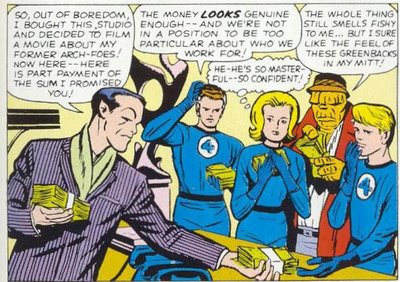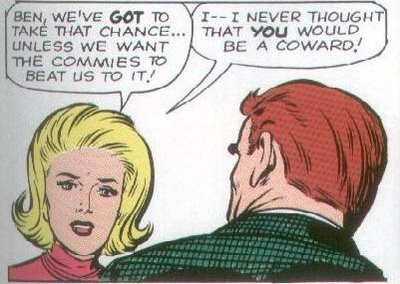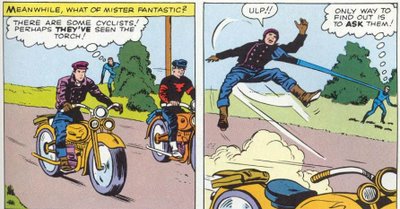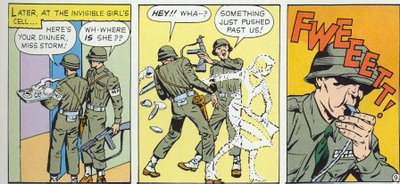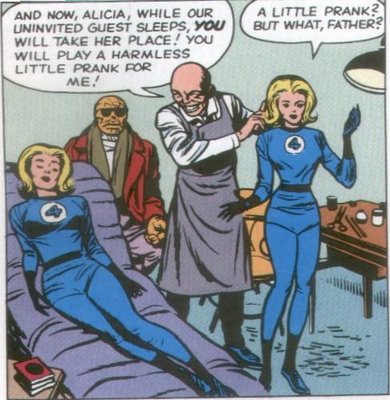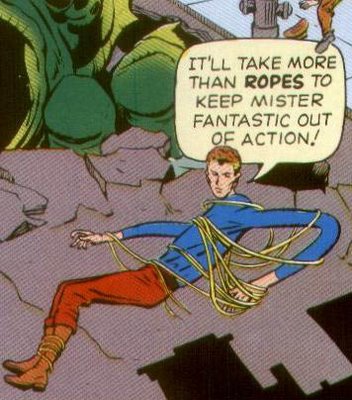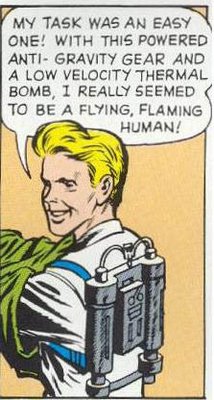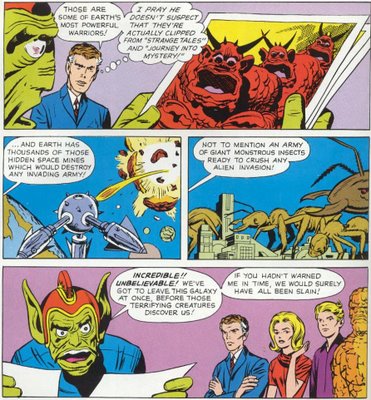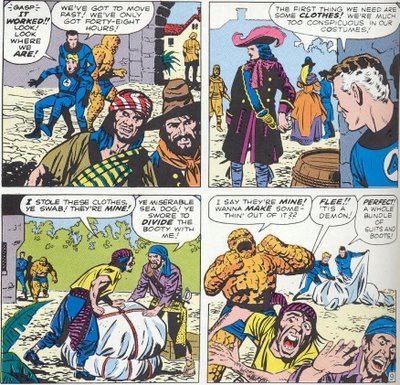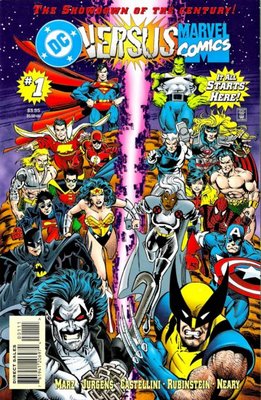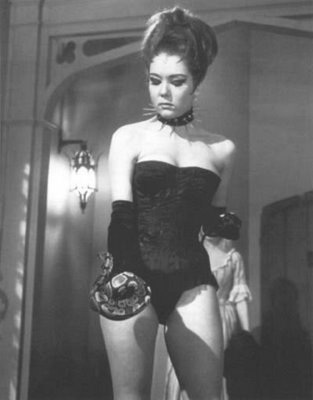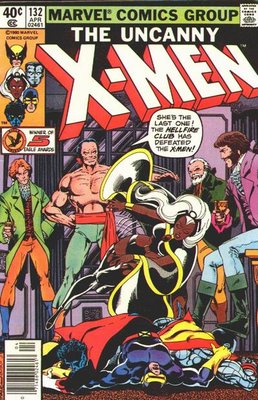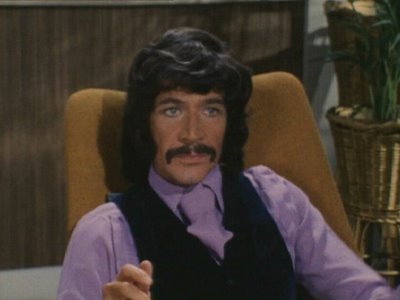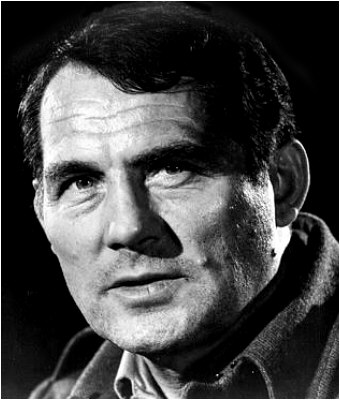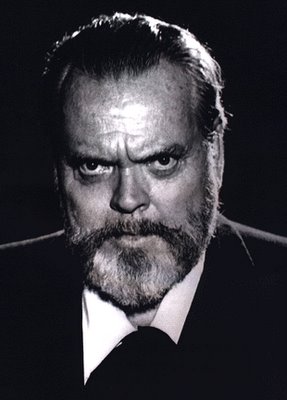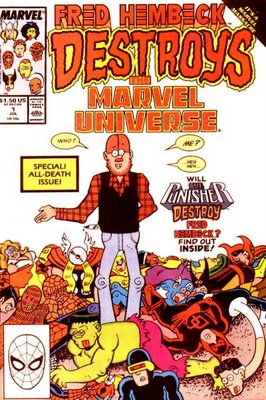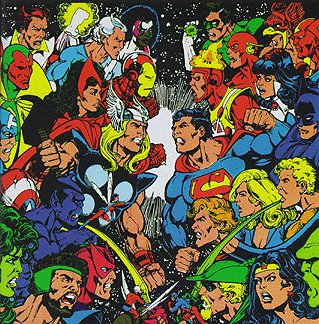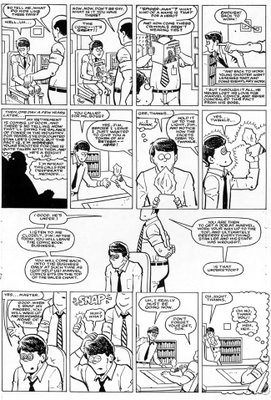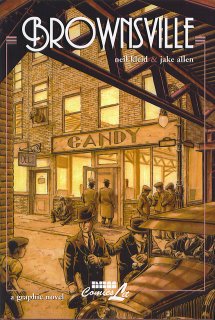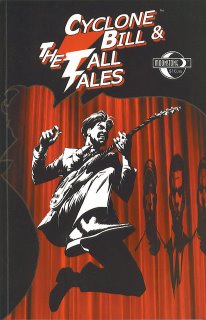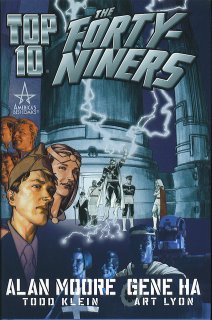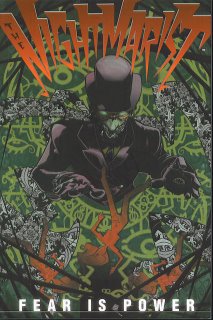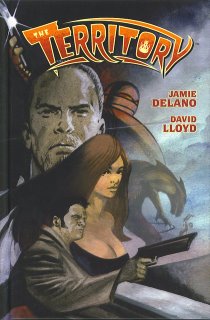By the way, Brad - All-Star Superman came out this week. Just thought you'd like to know. Visit a comic book store occasionally, why don't you? Sheesh.
I should mention that I've been a contributor here for a little over a year, and it's still fun. I'd just like to thank our Great and Terrible Overlord for visiting
my teeny-tiny blog and thinking I had some merit. Of course, if I didn't thank him occasionally, he'd find me over the ether of cyberspace somehow and rip my heart right out of my chest and then laugh as it caught on fire, just like that dude in
Indiana Jones And The Temple Of Doom! So thanks to all of you out there reading this, and I'll keep trying to
piss you off (that was a good day, wasn't it?). It's the least I can do!
Slow week, in that I bought less than double-digits in floppies. That's sad when that's a slow week. But it's the fifth week of the month, so I won't complain. According to the dude at my comic shoppe, next week is HUGE. So it looks like I'll be back in the support group next week.
Fallen Angel #4 by Peter David and J.K. Woodward
$3.99, IDW
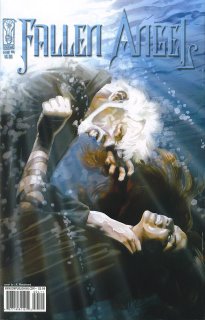
I am, as usual, running out of things to say about books I really, really like. Fallen Angel falls (so to speak) into that category. We finally find out why Lee fell, and although I was hoping against hope that it was because God made her the guardian angel of the dude that killed Holly (how cool would that have been?) it's still a powerful scene, even though we kind of know what's coming. Meanwhile, Lee battles Malachi in the present and learns some things about the bargain that he offered her about getting back into Heaven. The book is zipping much faster than the DC series did (possibly because it was originally a five-issue mini-series), but it still gives us the good characterization and action that David is good at. And, of course, the issue of free will comes into it, as Malachi tells Lee she has to allow Jude to make his own decisions, even though it might hurt him, which ties back to Holly's decision to go with the stranger. Who would have guessed that would come up again?
This continues to be a good book. As for the art, I have read more than one place that it's not good. I happen to like it, but if anyone out there is reading this book and doesn't like the art, please tell me why. I'm curious.
Gødland #9 by Joe Casey and Tom Scioli
$2.99, Image
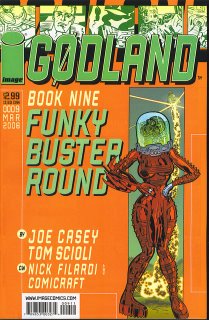
The glory that is Gødland continues with this issue, and it's one of those titles that just keeps getting better. This and ASS are examples (this week) of packing a lot of story into a limited space - good writers can do that! For instance, this month we get Adam Archer trying to come to terms with the Origin of the Universe that he learned last month, Neela taking off on her top-secret space mission, which requires setting off an EMP burst that knocks out all the machines in North America and knocks Adam, who is flying to Colorado to stop the launch after he learns about it from his other sisters, out of the sky and into a house, appropriately owned by the awesome Friedrich Nickelhead, who takes Adam prisoner. Meanwhile, Basil Discordia, with Basil's head and Discordia's body, has been delivered to the Tormentor's castle in "Luxembourg" (which, according to Basil, is in "eastern Europe"), where he is threatened with decapitation until he tells our Dr. Doom analogue that he can lead him to Friedrich. Who, as we now know, is currently holding Adam prisoner. See how it all fits? Meanwhile (I told you there was a lot going on!), Ed, Supra, and Eeg-oh, the three alien life forms that possessed the convicts last issue (or maybe the issue before), are out in the Arizonan desert (funny, it wasn't on the news here) testing their powers and blowing up Army helicopters. What fun!
As each issue has been, this is a wild ride. Casey and Scioli are obviously having a blast, and the book flies along like a roller coaster, and all we can do is fly along with it. I will keep telling you to buy it, people, until you bend to my will!
All-Star Superman #3 by The One To Whom We All Swear Eternal Fealty, Frank Quitely, and Jamie Grant
$2.99, DC
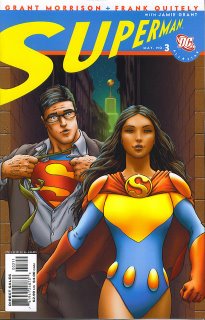
After last issue's disappointingly boring love chat between Superman and Lois, this is a fine return to form on the book. This is why Morrison can be the best comic book writer out there - it's certainly not his best work, but it shows all his strengths. We have the interesting and somewhat tawdry "heroes" Samson and Atlas, we have the Ultrasphinx Atom-Hotep and his radioactive necklace, we have the dinosaurs from the center of the earth - none of these things are terribly revolutionary, but Morrison has that way of making them real in the context of the comic with seemingly very little effort. All the stuff from last issue was nicely done, too, I just got bored with the story itself, and in this one, although it's moving slowly (nothing wrong with that), at least it moves. Therefore Samson the time-traveler knows that Superman is going to die, so he's putting the moves on Lois. However, the final page lets us know that Clark Kent wrote the article proclaiming Superman dead, so Morrison has something up his sleeve there. The annoyingly ubiquitous Tyrant Sun gets a mention, but I'll let that slide. What's interesting about Morrison is he sets up situations and gets his heroes out of them in unusual ways, such as the answer to the Ultrasphinx's riddle. He and Quitely are having a lot of fun showing just how casually powerful Superman is. He defeats Samson and Atlas at arm-wrestling without breaking much of a sweat, and Lois rhapsodizes about what it's like to be Superman. It's a nice little vignette.
As usual with a Morrison title, it's not perfect, because he gets a little carried away. Would Steven Lombard really say, "You tell me what a spaceman flying around in his underwear can give her that a good old hunk of prime American manhood can't?" Uh, no. And the chronomobile is one of those "mad ideas" that is just dumb. But these are minor objections. This is a fine book, and even though Superman hasn't really done much since the first few pages of issue #1, it's still giving us an interesting look at Superman.
Oh, what's that thing on Jimmy's arm on page 3? What is it?????
The Surrogates #5 (of 5) by Robert Venditti and Brett Weldele
$2.95, Top Shelf
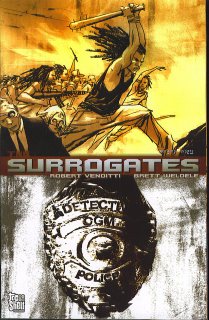
This very good mini-series comes to a close, and I urge you to buy it in trade if it gets collected. Although it ends on a particularly and kind of incongruous depressing note, it's still a very good read. The mystery/action part of the book is certainly interesting (although it's not much of a mystery), but the real meat of the book is Harvey Greer's journey of discovery. When his surrogate is destroyed by Steeplejack, he decides to solve the case using his real body. This decision affects several things, including his relationship with his wife. He begins to question what is real and why people use surrogates in the first place, and he begins to sympathize with Steeplejack's campaign to destroy them. Zaire Powell, the prophet who preaches against the use of surrogates, also becomes a pawn in Steeplejack's little game. Of course, as the mass producer of the surrogates says, nothing will change if Steeplejack succeeds, but who's to say people won't return to "reality"? It's an interesting spiritual question, and this mini-series delves into the conundrum of man creating "life" and how far should science go much better than a lot of media out there. It's well worth checking out. But you know that, because I've been telling you for months!
Mini-series I bought but did not read.
Hysteria: One Man Gang #2 (of 4) by Mike Hawthorne
$2.99, Image
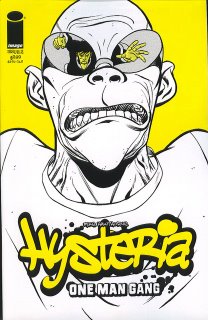
More hysteria. More grooviness. More empty calories. Even less protein!
Middleman Vol. 2 #2 (of 4) by Javier Grillo-Marxuach and Les McClaine
$2.95, Viper Comics

This is the sixth issue of this fine series to come out (four in the first mini-series, and two in this one), and I'm tired of telling you how funny it is. If a big fat Mexican wrestler on the cover doesn't do it for you, nothing will.
X-Statix Presents: Deadgirl #3 (of 5)
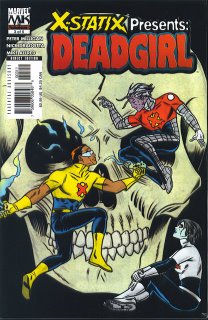
I assume it's still good. It looks fun.
That's it for this week. Just remember, kids: if you don't buy All-Star Superman you may displease the Great and Terrible Cronin! And you don't want that!Read More
